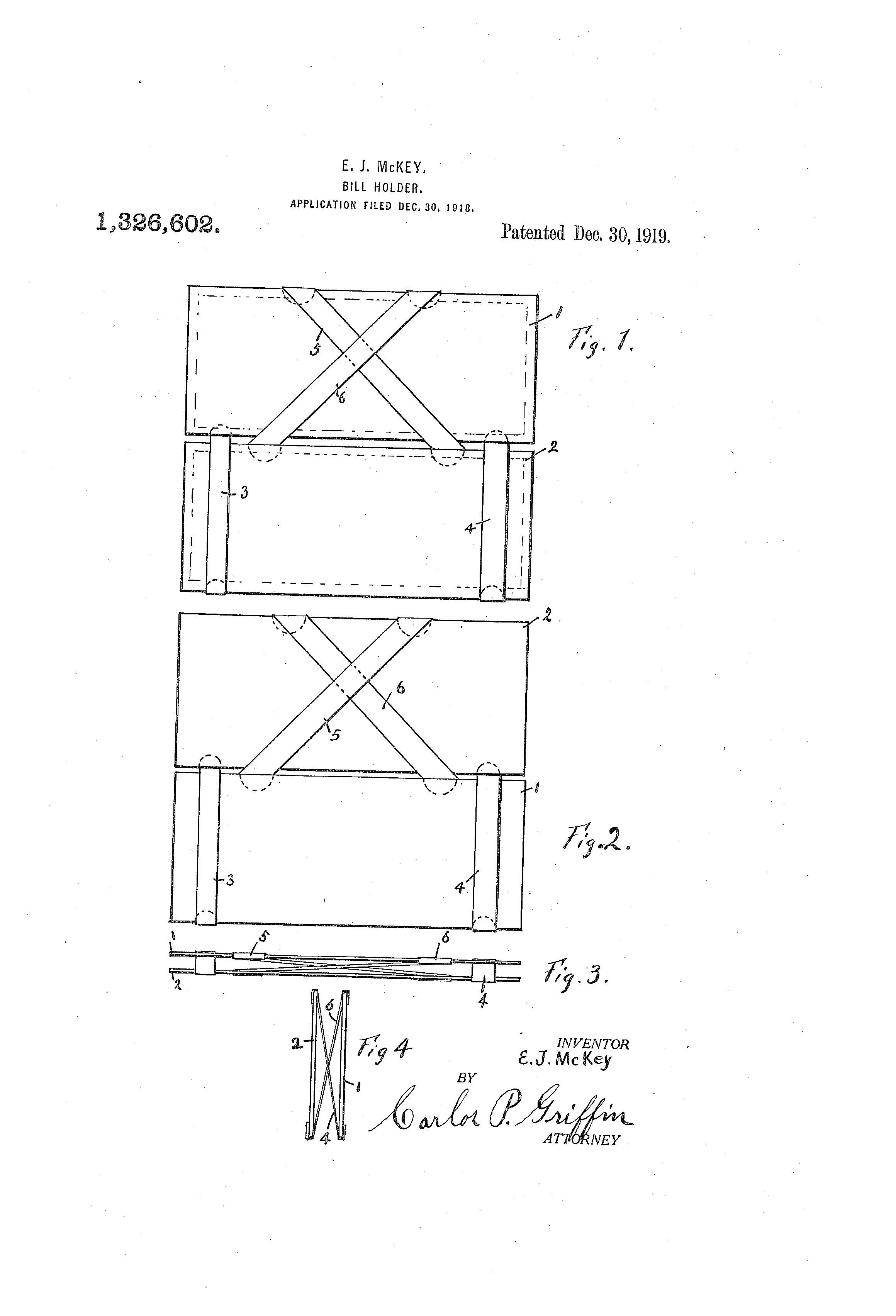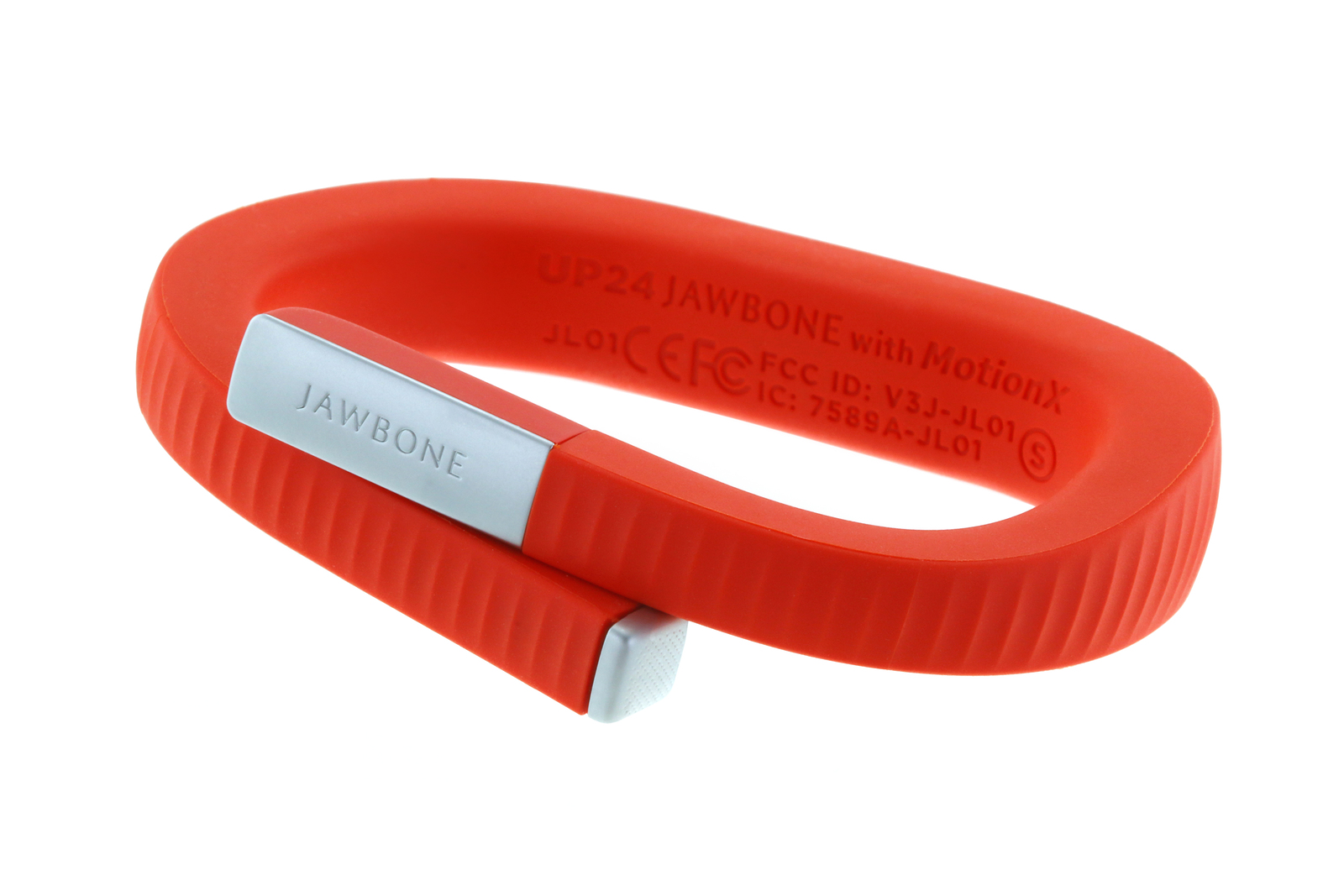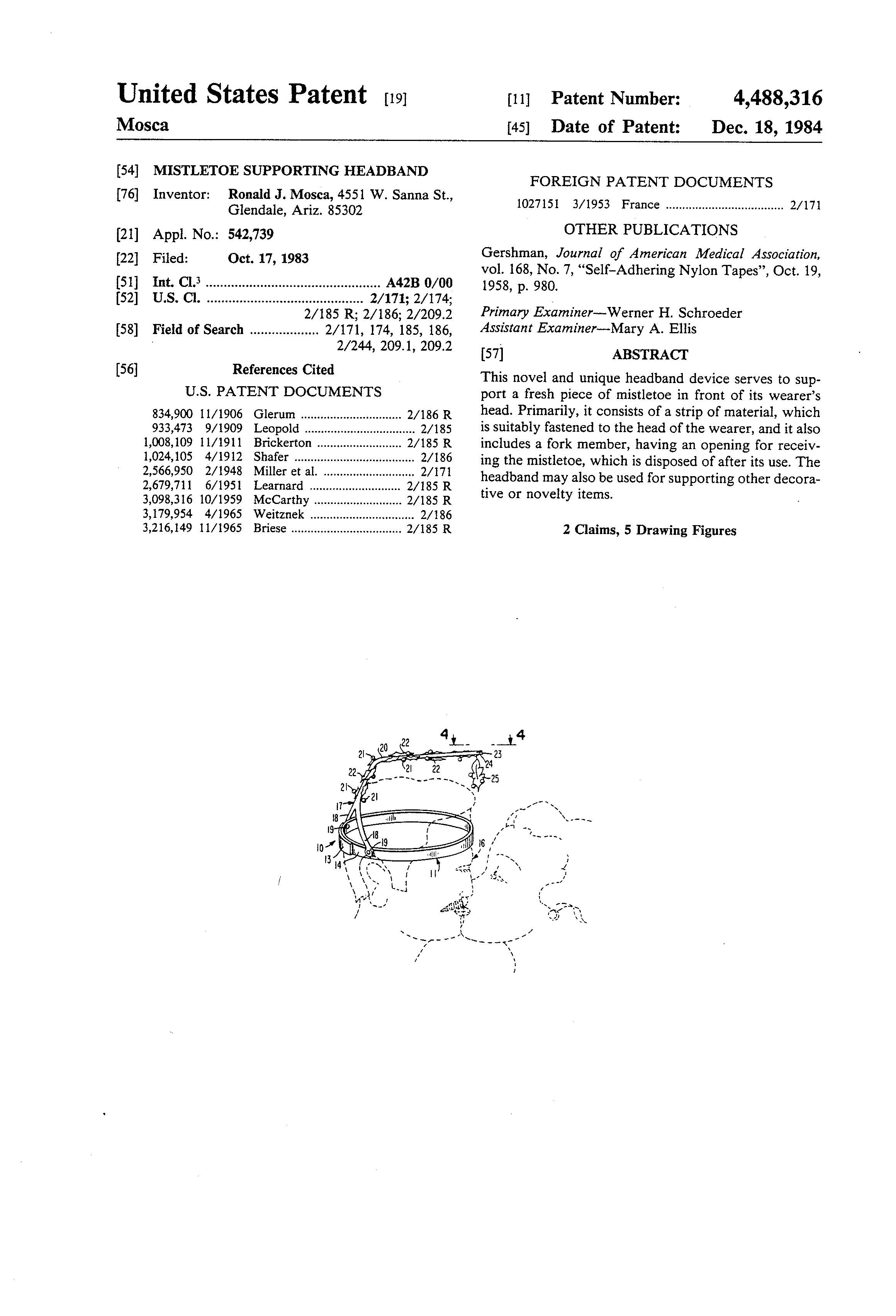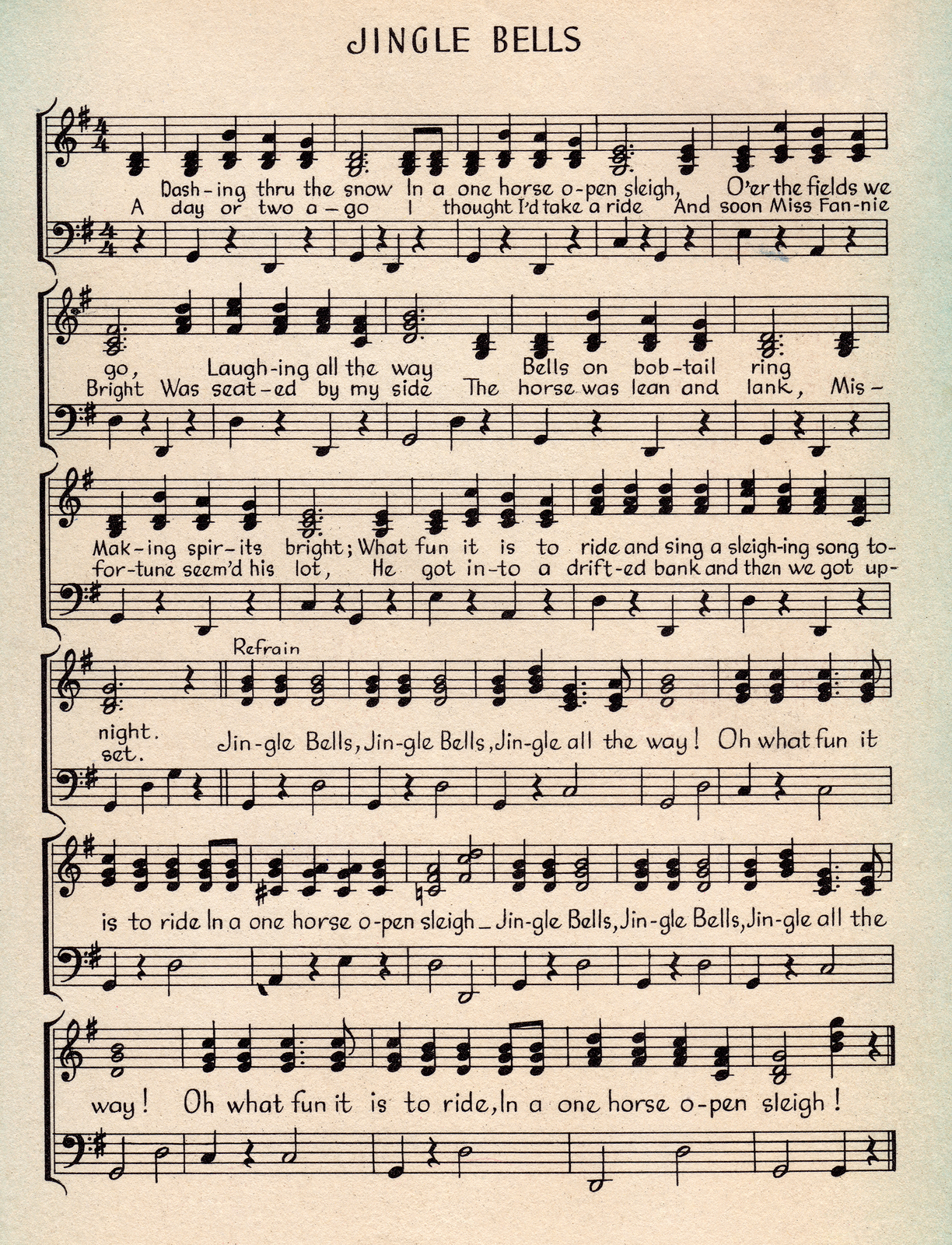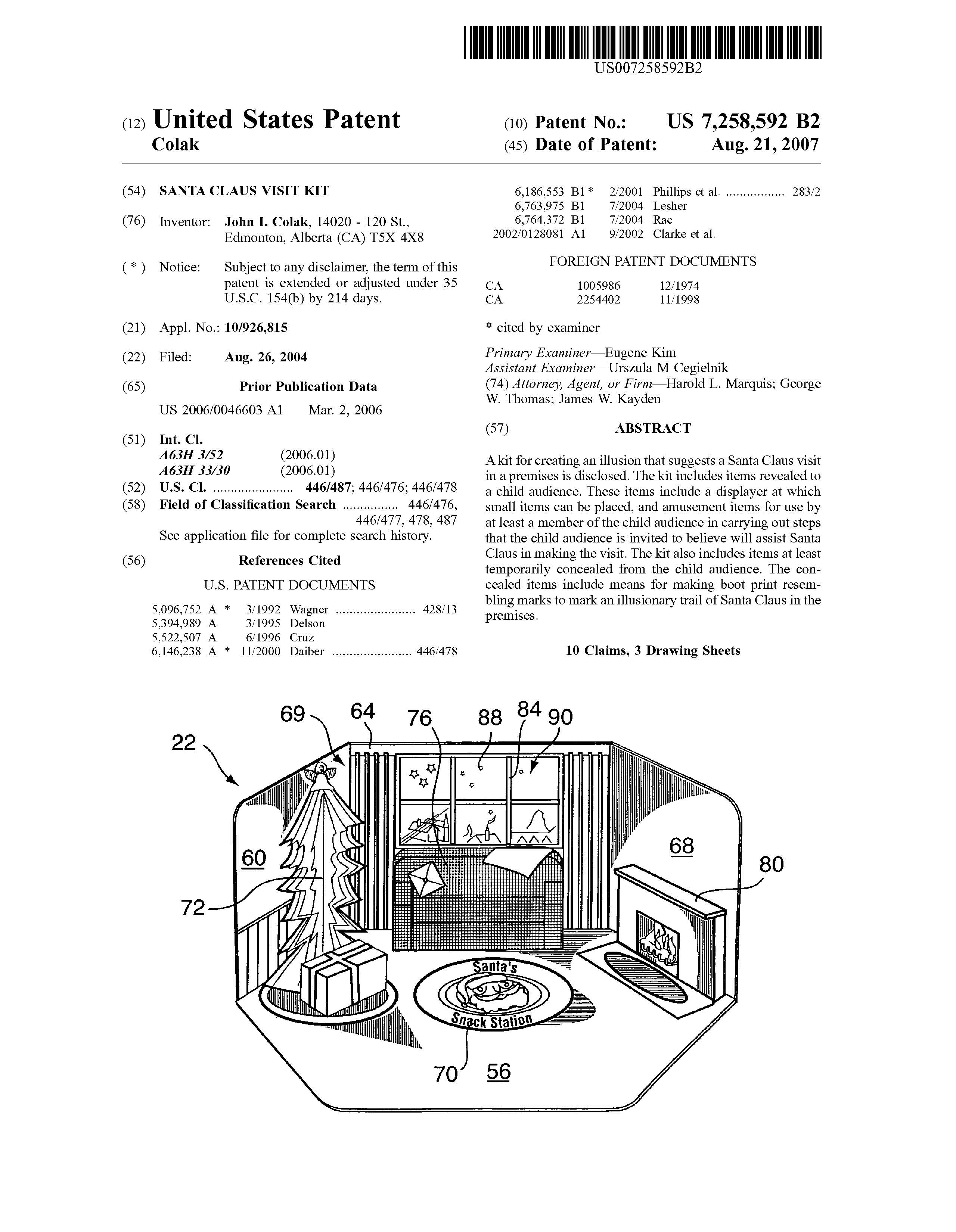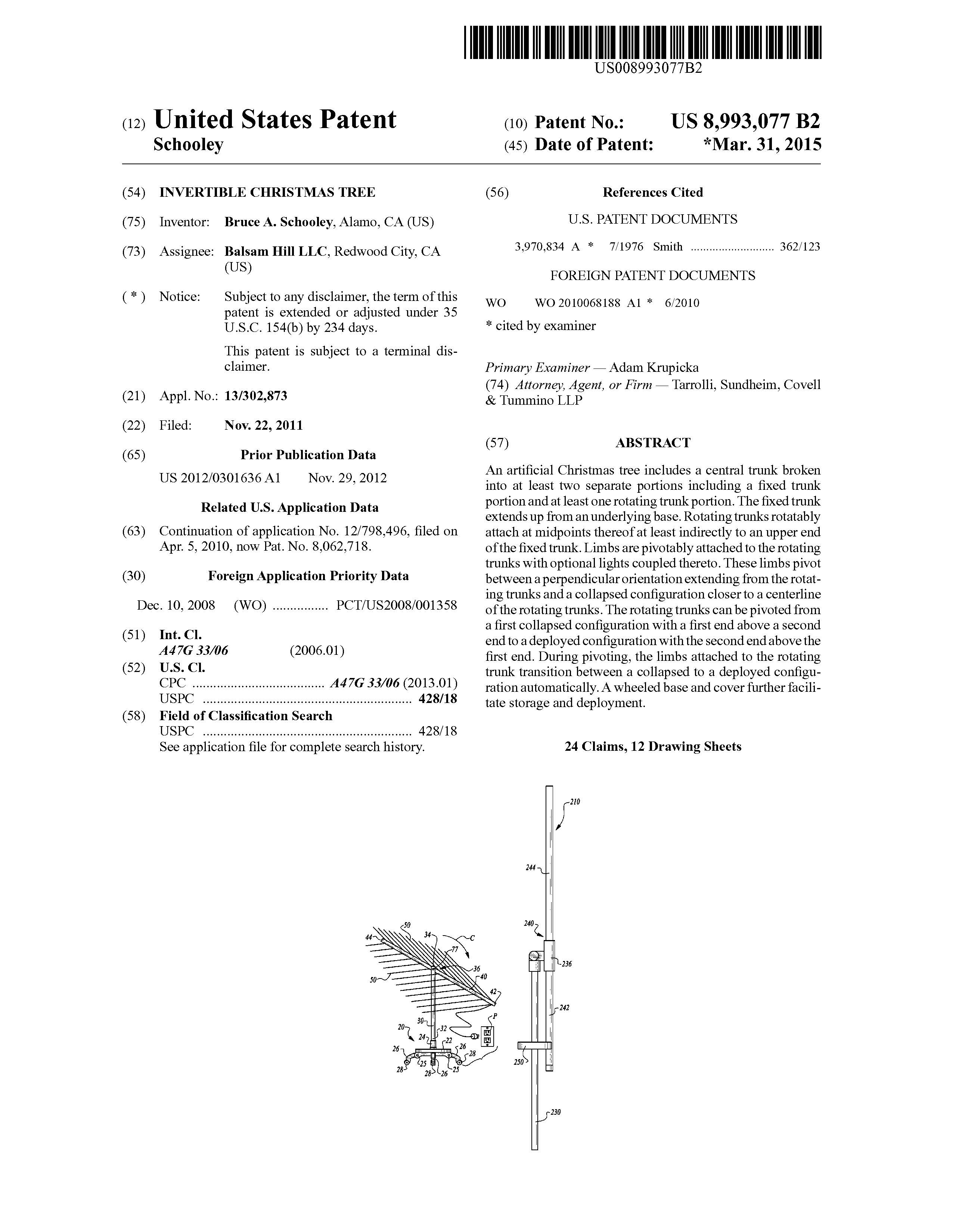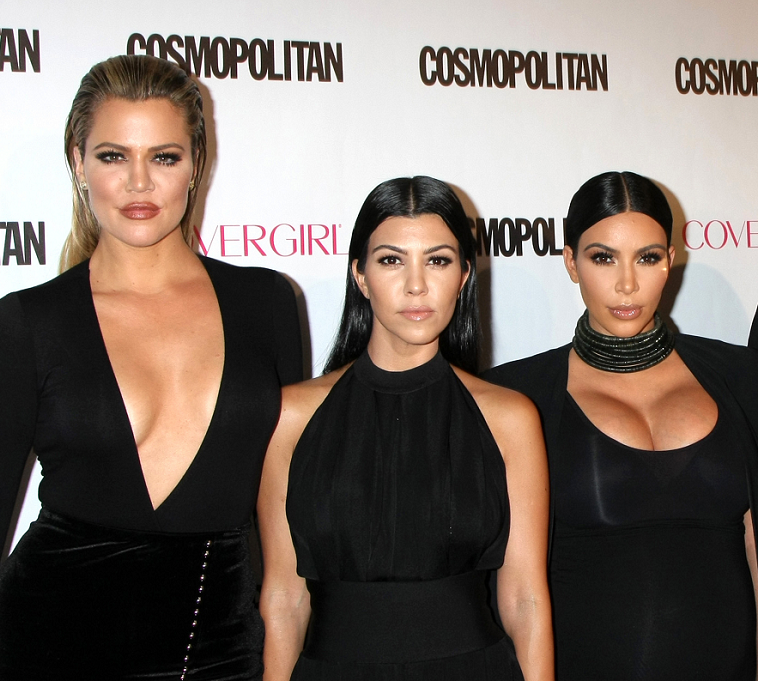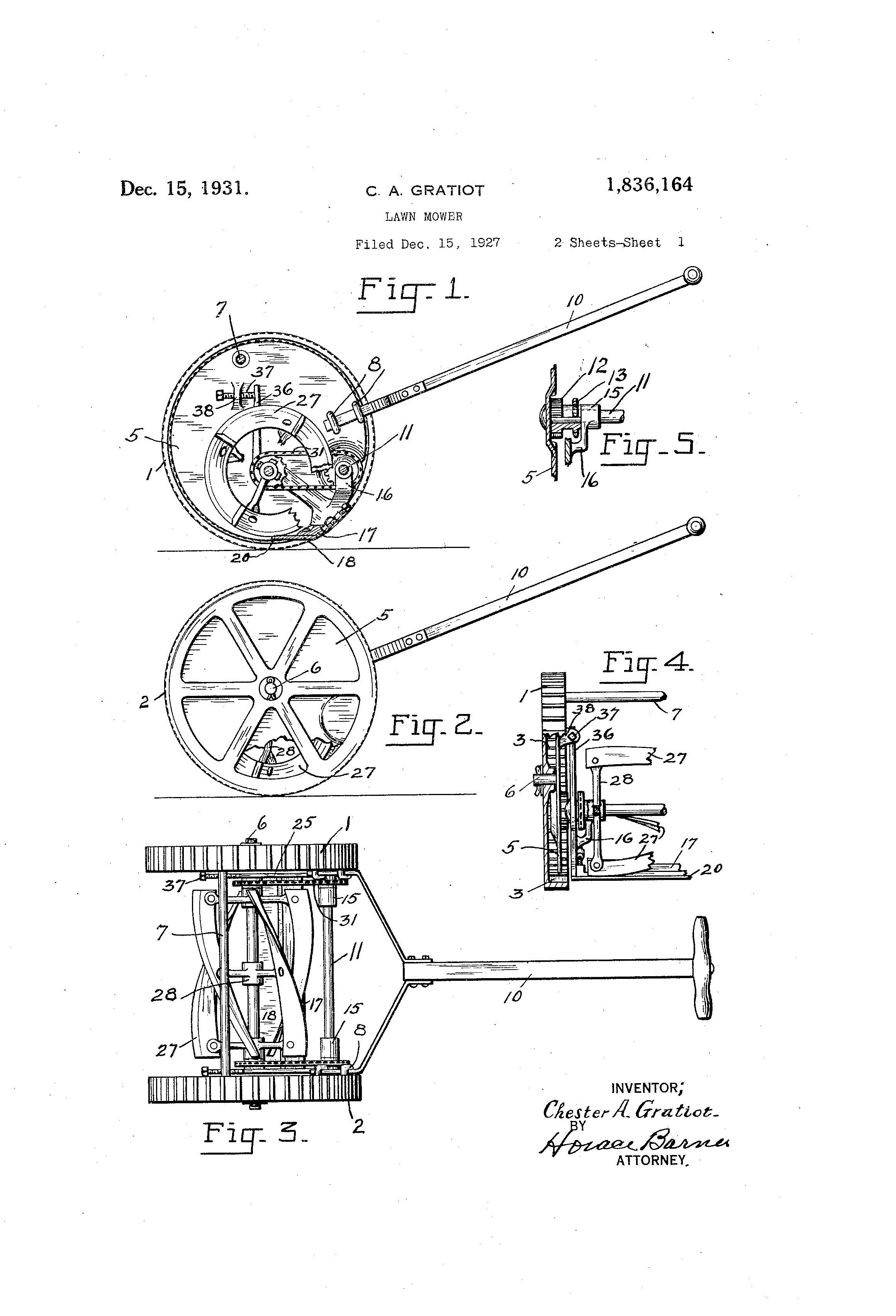Patent of the Day: Bill Holder
On this day in 1919 Emmett J. McKey was granted the patent for BILL-HOLDER. U.S. Patent No. 1,326,602.
This invention relates to a bill book and its object is to provide a carrier for currency which will hold the currency flat and securely; and which is easily opened and closed for the removal of the bills.

Patent of the Day: Cuff Adjuster
On this day in 1885 Lucien A. Stillwagon was granted the patent for CUFF HOLDER. U.S. Patent No. 333,485.
The object of this invention is to provide a simple and efficient device for holding cuffs in any desired position on the wrists, and which will admit of readily attaching and detaching the cuff without the trouble and vexation attending the use of cuff-buttons.
This invention consists in a bar provided at one end with a button adapted to enter the button-holes of the cuff,and having at the opposite end a pivoted spring-acted clamp for receiving the edge of the shirt-sleeve.
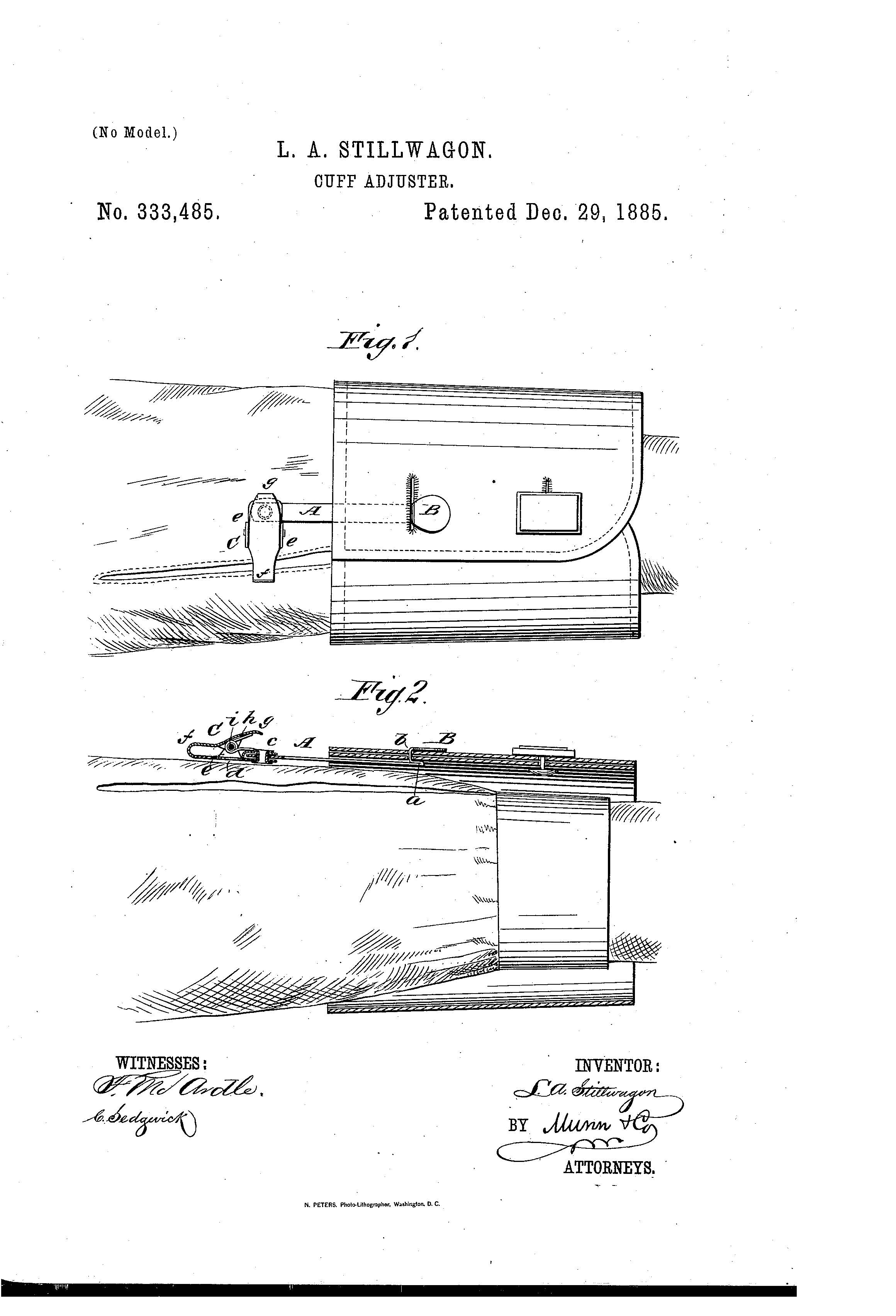
Fitbit Drops Case against Rival Jawbone
Fitbit Inc. has been involved in a contemptuous patent and trade secrets legal battle with AlphiCom Inc.’s Jawbone for over a year now. As of Friday, December 23rd, Fitbit has decided to drop the pending patent infringement complaint filed with the U.S. International Trade Commission (ITC).
Fitbit informed the ITC that they no longer wished to pursue the patent infringement lawsuit against AlphiCom. Fitbit stated “Jawbone appears to be a different company” in comparison to last year when the case was initially filed. “SEC filings of one of its biggest investors now value Jawbone shares as worth nothing, as well as indicate that Jawbone has filed for bankruptcy or is in default.” Fitbit further stated that "[Jawbone] no longer offers for sale any of its wearable activity trackers, nor any of its other products. Press reports and other public documents indicate that the demise of Jawbone's products has created substantial questions regarding Jawbone's ability to continue to operate."
As we previously reported, both of these San Francisco based companies specialize in the manufacture of wearable fitness trackers and the three Fitbit patents in question are related to portable tracking devices (8,868,377), heart rate monitoring systems (8,920,332), and motion detection technology (9,089,760). In July of 2016, the ITC determined that the claims in two of the patents (8,868,377, 8,920,332) are directed to patent ineligible subject matter. While not entirely clear, it is likely the Court found Fitbit’s claims ineligible because it considered them directed to an “abstract idea.” In September of this year, Fitbit was handed a victory when they successfully appealed the Trade Court’s ruling that their patent claims were ineligible. The ITC found that the courts ineligibility ruling was incorrect and sent the case back to the lower court for further review. Nevertheless, Fitbit withdrew their ITC suit altogether, rendering these decisions moot.
A spokesman for Jawbone noted there are no plans to file bankruptcy protection and said “Jawbone believes this case—involving patents already found once to be invalid—should have been dismissed long ago by Fitbit. Fitbit’s pursuit of these baseless claims for so long was to burden Jawbone, an issue to be raised in Jawbone’s antitrust claims against Fitbit.”
In a previous article, we discussed the lawsuit Jawbone brought against Fitbit. Jawbone’s suit was an attempt to block Fitbit from importing their fitness trackers into the United States. This lawsuit was based on allegations by Jawbone that Fitbit stole trade secrets from Jawbone by luring Jawbone’s employees to Fitbit in an attempt to steal information related to marketing plans and product design. Jawbone claims Fitbit is in possession of more than 1,800 of their files. The court ruled in favor of Fitbit on this matter and stated the company had not misappropriated trade secrets from Jawbone.
This is only one battle in the drawn out war between the two companies, and, while Jawbone may be grateful that Fitbit dropped this particular lawsuit, there are future rulings to come.
Patent of the Day: Gravity Powered Shoe Air Conditioner
On this day in 1994 Israel Siegel was granted the patent for GRAVITY POWERED SHOE AIR CONDITIONER. U.S. Patent No. 5,375,430.
A compressor-expander type cooling, or heating system is incorporated into a heel of a shoe, and is powered by reciprocal gravity pressures upon the shoe which occur naturally during walking. The cooling system functions through a bellows compressor chamber and a separate bellows expander chamber. The movable walls of the expander and the compressor are placed opposite each other and transmit opposing vector forces to each other. A movable heel portion at the bottom of the shoe transmits movement to the movable person wearing the shoes steps on the heel. This expands the expander and compresses the compressor. A network of heat exchange coils, containing a low boiling point liquid, communicates with the expander, and functions as heat absorbing evaporator. Another network of heat exchange coils communicates with the compressor chamber, and functions as a heat delivering condenser. Depending on the locations the evaporator and the condenser networks, the shoe can serve as a foot cooler or warmer.


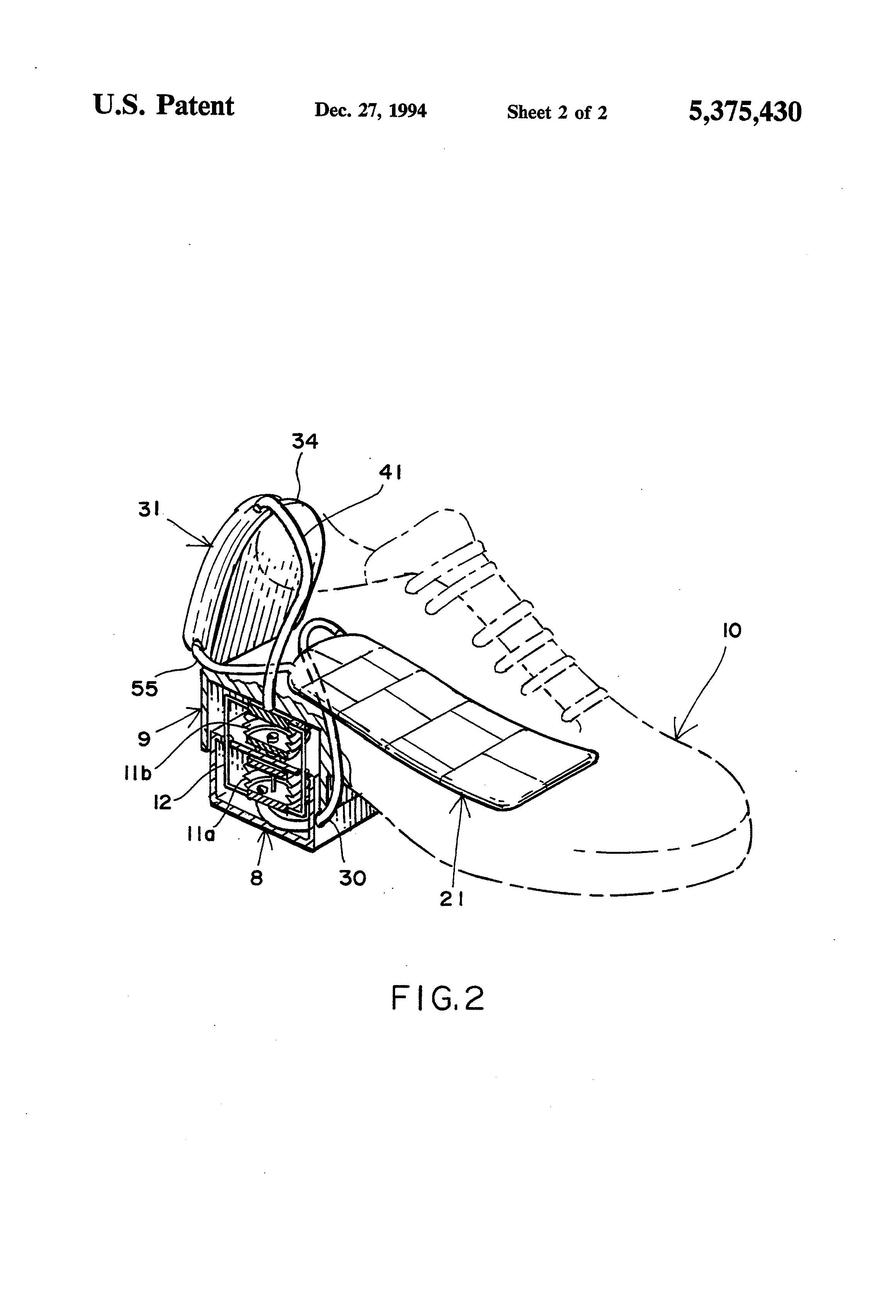
Christmas Patent of the Day: Mistletoe Supporting Headband
Ronald J. Mosca was granted the patent for MISTLETOE SUPPORTING HEADBAND on December 18, 1983. U.S. Patent No. 4,488,316.
This novel and unique headband device serves to support a fresh piece of mistletoe in front of its wearer's head. The headband may also be used to support other novelty items.
This invention, which will be worn on the head of the users, to display a piece of mistletoe above the forehead of its users, so as to entice a person or persons to kiss the wearer, as is an old Christmas custom, with the exception, that formerly, mistletoe was hung in such areas as a doorway, and if a person should happen to stand in such a doorway, another person could take the liberty of kissing the one in the doorway.
For those who are lonely on Christmas this would be a great ice-breaker and a great way to meet someone.


Jingle all the Way through Christmas Songs and Copyrights

Christmas is almost here. The stores are busy with shoppers and children are waiting in line to see Santa, but no matter where your busy holiday schedule takes you this holiday season you are sure hear the sounds of a Christmas carols.
For many, Christmas music can take you back to your early Christmas years, leaving cookies for Santa on Christmas Eve or waking up early in the morning to discover what Saint Nick had left in your stocking. While many of the classic Christmas songs have a special place in our hearts, it is worth noting that they also receive the benefit of copyright protection.
The United States Copyright Office states that a “[c]opyright is a form of protection grounded in the U.S. Constitution and granted by law for original works of authorship fixed in a tangible medium of expression. Copyright covers both published and unpublished works.” Copyrights protect artistic and literary works such as books, computer software, architecture, graphics, photographs, movies, musical works, including Christmas carols.
Many of the carols sung today are hundreds of years old and have outlived their copyright protection. We Wish You a Merry Christmas has been around since the 19th century, while The Twelve Days of Christmas has been sung even longer, dating back to the 16th century. A few more recently composed carols that have also outlived their copyright protection are Jingle Bells, What Child is This, Away in a Manger, Deck the Halls and Silent Night.
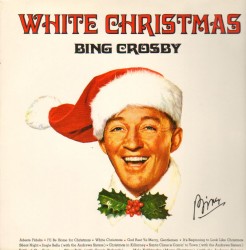 While the aforementioned songs are no longer protected by copyright, numerous others are still under protection. One famous Christmas song still under copyright is White Christmas. It is interesting to note that White Christmas, composed by Irving Berlin between 1940-1942 almost never came to be. Berlin was asked to write a Christmas song for the movie Holiday Inn; he struggled to write this song as his Jewish upbringing did not provide the greatest frame of reference for composing a Christmas tune. Nevertheless, Berlin did finally finish the song, which was very well received. Bing Crosby, the famous voice behind the song, fell in love with the tune after hearing it. The rest they say is history and White Christmas is now one of the highest-selling songs in history.
While the aforementioned songs are no longer protected by copyright, numerous others are still under protection. One famous Christmas song still under copyright is White Christmas. It is interesting to note that White Christmas, composed by Irving Berlin between 1940-1942 almost never came to be. Berlin was asked to write a Christmas song for the movie Holiday Inn; he struggled to write this song as his Jewish upbringing did not provide the greatest frame of reference for composing a Christmas tune. Nevertheless, Berlin did finally finish the song, which was very well received. Bing Crosby, the famous voice behind the song, fell in love with the tune after hearing it. The rest they say is history and White Christmas is now one of the highest-selling songs in history.
Johnny Marks, composer of many famous Christmas songs, composed Rudolph the Red-Nosed Reindeer in 1949. The intro to this song, "You know Dasher and Dancer and Prancer and Vixen, Comet and Cupid and Donner and Blitzen, But do you recall  The most famous reindeer of all?" actually came from a poem, “A Visit from Saint Nicholas”. Fortunately, for Marks, the poem was public domain when the song was written. Gene Autry’s rendition of Rudolph the Red-Nosed Reindeer eventually topped the record charts in 1949 and is protected under copyright still today.
The most famous reindeer of all?" actually came from a poem, “A Visit from Saint Nicholas”. Fortunately, for Marks, the poem was public domain when the song was written. Gene Autry’s rendition of Rudolph the Red-Nosed Reindeer eventually topped the record charts in 1949 and is protected under copyright still today.
Frosty the Snowman, was written in 1950 by songwriters Jack Nelson and Steve Rollins. They saw the popularity of Rudolph 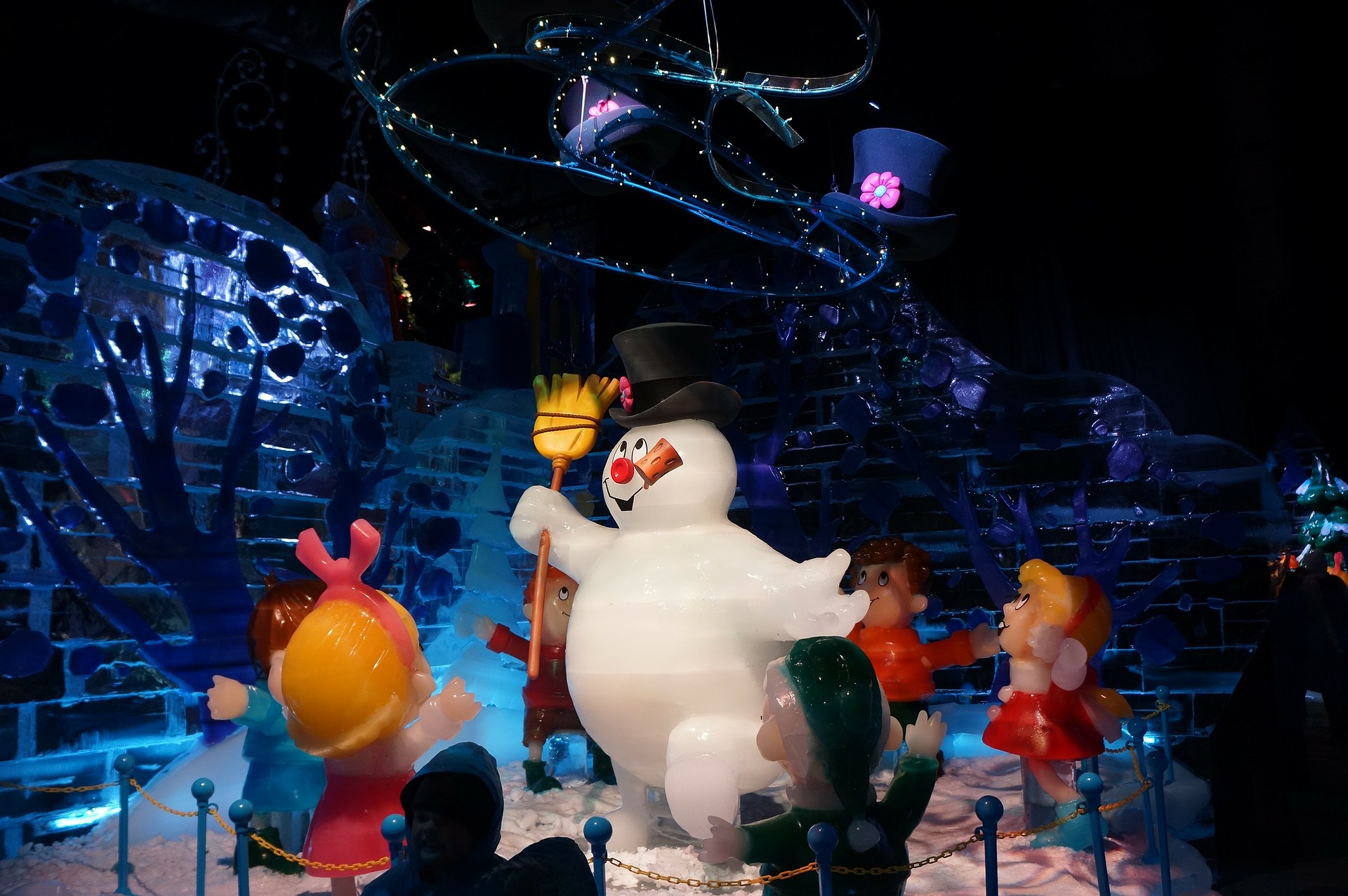 the Red-Nosed Reindeer and decided to try their hand at carols. Their plan worked. According to Esquire magazine Frosty the Snowman is one of the top 25 most popular Christmas songs.
the Red-Nosed Reindeer and decided to try their hand at carols. Their plan worked. According to Esquire magazine Frosty the Snowman is one of the top 25 most popular Christmas songs.
You better check your list twice because Santa Claus is Coming to Town is also still protected under copyright. This song was written in 1932 by John Frederick Coots and Haven Gillespie, although the end of the copyright is near, it is still emphatically enforced as are many of the most famous works Therefore, while many carols are public domain, it never hurts to check to see if a work is protected under copyright.
We here at Suiter Swantz IP wish you and your family a harmonious and happy holiday season.
Christmas Patent of the Day: Santa Claus Visit Kit
On August 21, 2007 John Cook was granted the patent for SANTA CLAUS VISIT KIT. U.S. Patent No. 7,258,592.
This invention relates to a kit showing children that Santa Clause visited the premises. The kit includes a displayer at which small items can be placed, and fun games the children can play to help to get Santa to come to their house.
The kit also includes items to be placed around the house to show that Santa was there, a letter from Santa and a boot-print stencil to mark the glitter footprint trail of Santa. The kit also includes a diorama in case the parents are not sure what to do. The steps are listed as follows:
The method comprises the steps of:
(1) assembling the Christmas diorama;
(2) attaching the card to the diorama outside the presence of the child audience; before the child audience has gone to sleep on Christmas Eve, and
in front of the child audience:
(3) sprinkling contents of said packaged glitter outside the premises;
(4) placing the toy key outside the premises;
(5) placing a snack Within the region; outside of the child audience on Christmas Eve:
(6) marking the premises With the marking means to signify a recent presence of Santa Claus;
(7) removing at least a portion of the snack;
(8) leaving the letter professing to be from Santa Claus in the region; and
(9) removing the card from the diorama.
The Christmas kit according to the present invention facilitates interaction between parents and their children so as to create a memorable experience in connection with Christmas.




Christmas Patent of the Day: Invertible Christmas Tree
Bruce A. Schooley and assignee Balsam Hill LLC were granted the patent for INVERTIBLE CHRISTMAS TREE on March 31, 2015. U.S. Patent No. 8,993,077.
This patent is an artificial Christmas Tree that includes a central trunk broken into at least two separate portions including a fixed trunk portion and at least one rotating trunk portion. The fixed trunk extends up from an underlying base. Rotating trunks rotatably attach at midpoints thereof at least indirectly to an upper end of the fixed trunk. Limbs are pivotably attached to the rotating trunks with optional lights coupled thereto. These limbs pivot between a perpendicular orientation extending from the rotating trunks and a collapsed configuration closer to a centerline of the rotating trunks. The rotating trunks can be pivoted from a first collapsed configuration with a first end above a second end to a deployed configuration with the second end above the first end. During pivoting, the limbs attached to the rotating trunk transition between a collapsed to a deployed configuration automatically. A wheeled base and cover further facilitate storage and deployment.
We recently wrote about the company that produces these artificial trees. They had a float in the Macy's Thanksgiving Day Parade and have been the artificial tree provider to many celebrities as well as the sets of many T.V. shows and movies.













Kardashians in Trademark Battle with Blac Chyna Over Name

By now most people are familiar with the Kardashian name. Kim, Khloe, and Kourtney Kardashian, famously known for their reality show Keeping Up with the Kardashians, their fashion line, as well as their many social media postings, have filed a trademark opposition against their future sister-in-law Blac Chyna.
A trademark opposition proceeding is an administrative step within the United States Patent & Trademark Office (USPTO), which allows a third party to oppose the registration of a trademark, following the publication of the mark for opposition in the USPTO’s Original Gazette. In order to oppose a trademark the third party must have a real or legitimate interest in the proceeding, which generally requires the third party to have a direct or personal stake in the mark. It is not enough for the third party to have a general belief that the trademark registration would be unfair.
Rob Kardashian and Blac Chyna just celebrated the birth of their daughter Dream Renée and were in the midst of planning their wedding. Recently, Blac Chyna tried to trademark her legal name, Angela Renée White as “Angela Renée Kardashian”. The stated reason for the trademark application was to allow her to use the name on her social media pages and in the entertainment community.
When the Kardashians’ attorneys discovered the trademark application, they filed an opposition. The opposition stated that “[u]pon information and belief, the Applicant intends to use the Opposed Mark in connection with services that are marketed and sold in the same or similar channels of trade, and to be purchased by the same or substantially similar classes of consumers as the services offered by Opposers, and each of them, under the Kardashian Marks.”
Some are questioning why Chyna would try to trademark a name that wouldn’t legally be hers until she is married. Others are now questioning it even more since Rob and Blac Chyna have recently split. There are many reasons why someone would file a trademark for a name. For one, it assures consumers that what they are purchasing actually came from the named person selling the item. Take Martha Stewart for example. She has trademarked her name, and that name is now associated with her brand. The same goes for Ralph Lauren, Calvin Klein, etc. These individuals’ names have become synonymous with their individual brand. Another reason someone may want to trademark their name is to prevent others from using it. This helps prevent confusion about the source of products or brands. This is one of the main reasons the Kardashians have filed the lawsuit. The Kardashians are concerned that Chyna is trying to use the name for her own personal gain and benefit. Attorneys for the Kardashians have stated that "[t]he applicant is deliberately seeking to profit from the goodwill and popularity of opposers' Kardashian marks," further noting that the use of the name could “cause confusion” and “deceive consumers.”
While anyone could potentially trademark their name, the problem enters when the new trademark is similar to an existing trademark in such a way that would lead to consumer confusion. A key issue in this matter is that the services that Chyna listed in her trademark application would be similar to the services that the Kardashians already have trademarked. It is rumored that Chyna, under the moniker Kardashian, is going to launch entertainment services such as television and movie appearances, party hosting, as well as allowing the public to see her life as a “social media celebrity.” In the opposition, the Kardashians claim that they will “suffer damage including irreparable injury to their reputation and goodwill” if Chyna uses the Kardashian name in this manner.
Chyna’s lawyer Walter Mosley says he hopes this is “just a big misunderstanding but [he’s] just proceeding as if it’s not and [is] going to do the best work [he] can for [his] client.”
We will have to wait and see if the opposition is continued or if an agreement can be reached.
Christmas Patent of the Day: Santa Claus Detector
On June 4, 1996 Thomas Cane was granted the patent for SANTA CLAUS DETECTOR. U.S. Patent No. 5,523,741.
This patent is a children's stocking device that will visually signal the arrival of Santa Claus. When the signal is activated a light will illuminate letting the child know Santa was there.
The stocking device is hung by the fireplace or place where Santa will enter. Common folklore says that presents under the tree for those who have been good is the indicator that Santa was there. This device is an added element to that folklore.





Patent of the Day: Mickey Mouse Toy
On this day in 1930 Walter E. Disney was granted the design patent for TOY OR SIMILAR ARTICLE. U.S. Patent No. Des. 82,802.
This toy or similar article is Mickey Mouse, one of the most popular cartoon characters Walt Disney created. The creation of Mickey came from a time of desperation for Disney and his brother Roy. Disney had just had their most profitable work stolen from them by Universal distributor Charles Mintz. Mintz took cartoon character Oswald the Lucky Rabbit and Disney's artists. In 1948 Disney penned an essay titled “What Mickey Means to Me.” In the essay Disney stated “[Mickey] popped out of my mind onto a drawing pad 20 years ago on a train ride from Manhattan to Hollywood at a time when the business fortunes of my brother Roy and myself were at lowest ebb, and disaster seemed right around the corner.”
Adults and children everywhere are glad Disney didn't give up as Mickey is one of the most recognizable characters in the world.
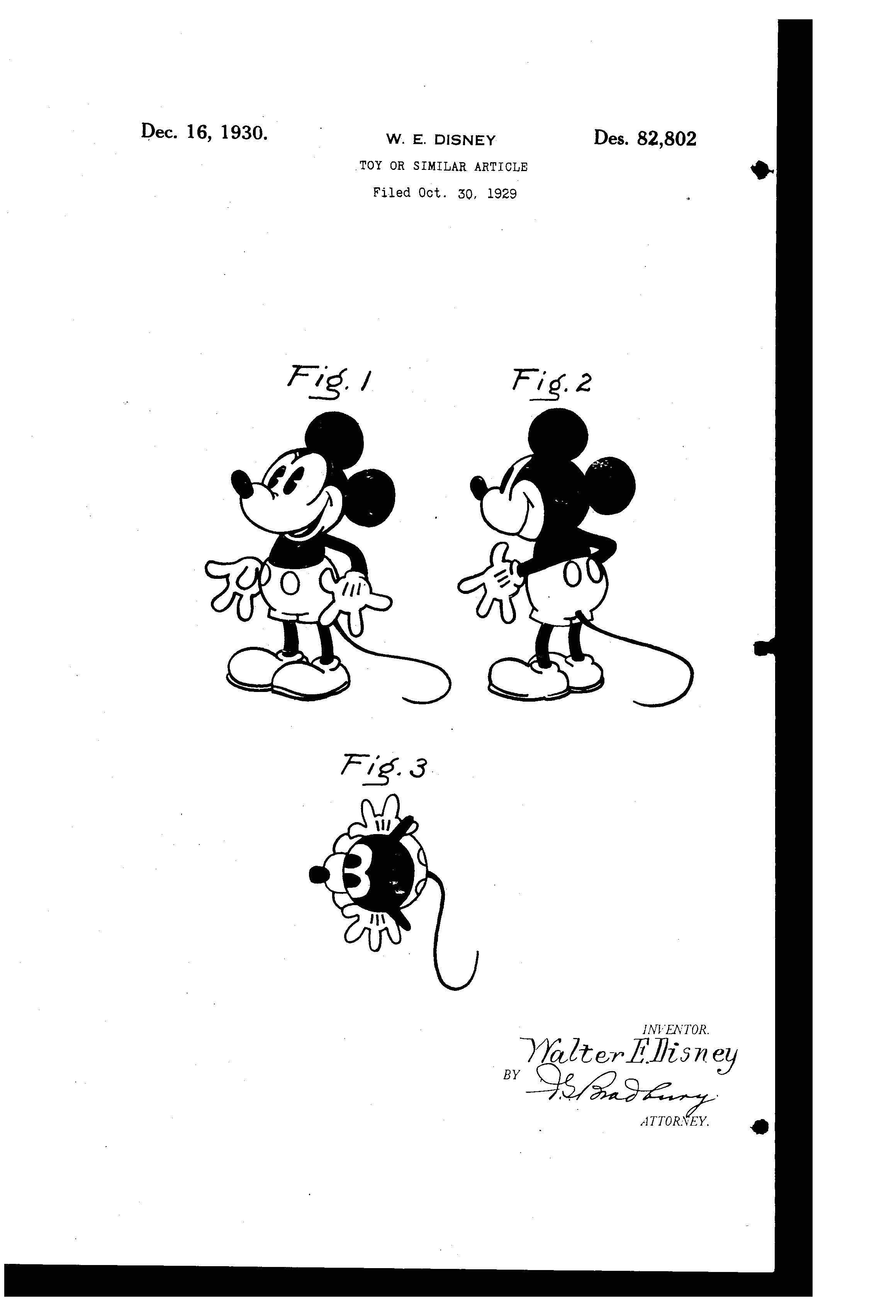
Patent of the Day: Lawn Mower
On this day in 1931 Chester Gratiot was granted the patent for LAWN MOWER. U.S. Patent No. 1,836,164.
The object of this invention is to provide a lawn mower in which the cutting knives both relatively stationary and rotary are pivotally mounted in hangers, whereby adjustments made be made relative to the length of grass to be cut and the entire cutting assembly will yield to undue obstructions encountered when mowing a lawn.
One thing that sets this mower apart from others patented at this time is the device for driving the cutting reel and for the relative adjustment of the various parts. This allowed the user to adjust the height of the mower in comparison to the height of the grass which led to more effective and efficient mowing practices.



